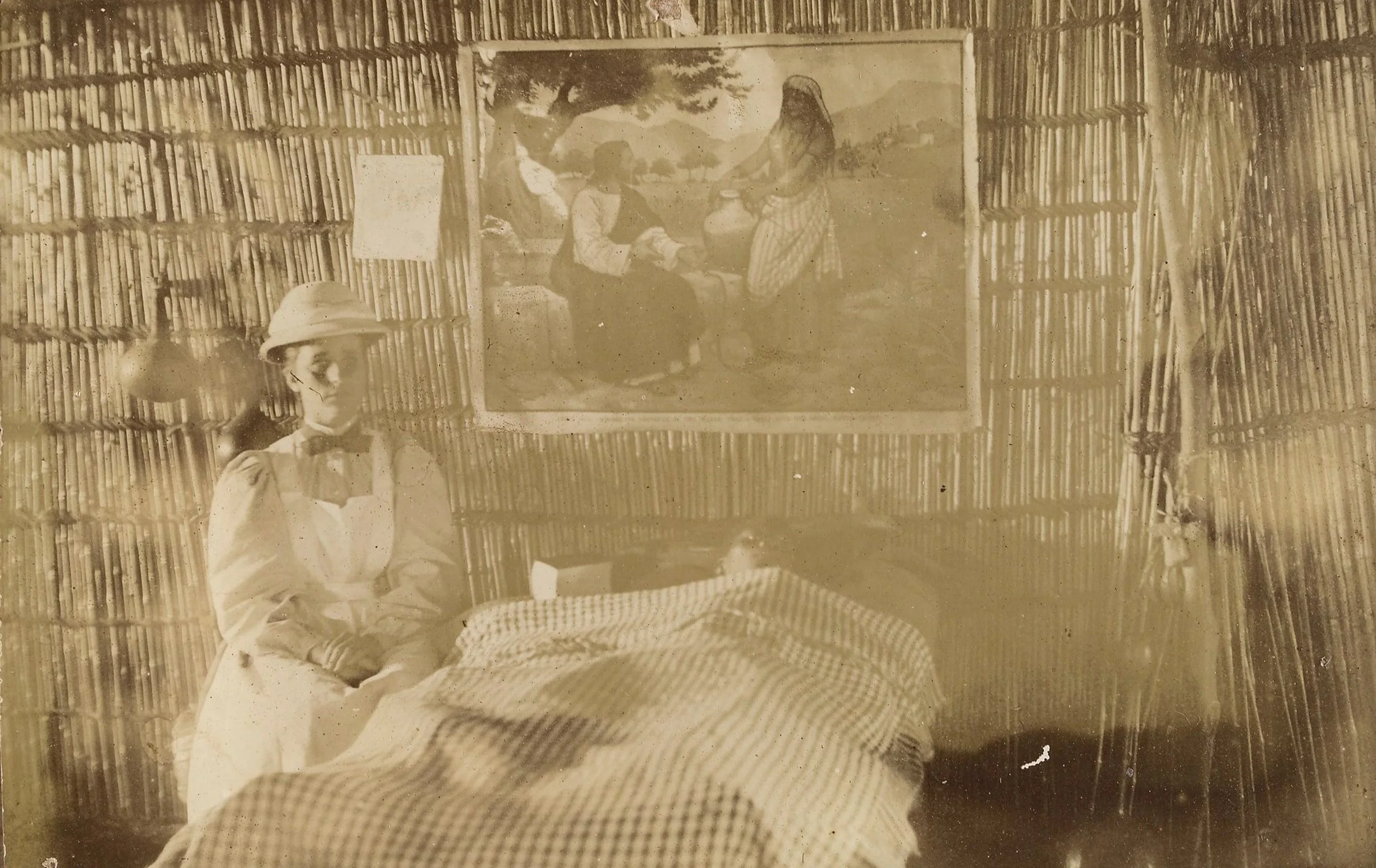The Forgotten Women of the Antibiotics Race
Throughout the 20th century, the competition to find new antibiotics was among the most important searches for a biomedical intervention for infectious disease. With the onset of World War II, the search accelerated with the need to treat soldiers overseas.
Although Alexander Fleming had discovered penicillin in 1928, scientists didn’t know the full range of its abilities, and it was difficult to mass produce. Penicillin and other antibiotic research were a military priority during the war, and as such the federal government and pharmaceutical companies funded research at several university laboratories. Scientific discovery offered the potential to revolutionize medicine; it also represented commercial possibility and professional status.
But as newspapers excitedly reported about the possibilities offered by new drugs such as penicillin and streptomycin, the stories of the women scientists who conducted groundbreaking antibiotic research became obscured amidst frequent news reporting and the corporate and academic hierarchies that shaped their careers. The stories of Elizabeth Bugie Gregory, Mattiedna Johnson, and Mildred Rebstock illustrate how, even when they were essential to innovative biomedical research, many women scientists did not enjoy the career and financial opportunities experienced by their male counterparts.
A groundbreaking outcome of wartime antibiotic research was the discovery of streptomycin, which was effective against tuberculosis. Merck & Co. funded research in the lab of Selman Waksman, a soil microbiologist at Rutgers University. In 1944, Albert Schatz, Elizabeth Bugie, and Waksman published their discovery of streptomycin in the Proceedings of the Society for Experimental and Biological Medicine. Schatz was a doctoral student working in Waksman’s lab, and Bugie was a master’s student who confirmed Schatz’s results.
When Waksman and Schatz patented streptomycin, Bugie’s name wasn’t on the application. Once its effectiveness against tuberculosis was proven, streptomycin became a highly profitable discovery for which Waksman later began to collect royalties. This led to a well-publicized dispute between Schatz and Waksman. Schatz sued Waksman and the Rutgers Research and Endowment Foundation to be credited as co-discoverer and to receive royalties. The lawsuit was eventually settled, with Rutgers receiving 80 percent of the royalties, Waksman receiving 10, and Schatz getting 3. The little remaining was divided among 14 other workers in the lab, including Bugie and H. Christine Reilly, the only two women to receive royalties.
“The stories of Elizabeth Bugie Gregory, Mattiedna Johnson, and Mildred Rebstock illustrate how, even when they were essential to innovative biomedical research, many women scientists did not enjoy the career and financial opportunities experienced by their male counterparts.”
Bugie died in 2001, and in her obituary in the Pittsburgh Post-Gazette, Schatz said Bugie wasn’t listed on the patent because she wasn’t involved in the discovery that streptomycin was useful for tuberculosis and signed an affidavit saying she wasn’t central to finding streptomycin. However, one of Bugie’s daughters claimed that her mother was told it wasn’t important to be on the patent because she would later get married.
It’s true that Bugie didn’t co-author the paper about streptomycin’s use for tuberculosis, but as the second of three authors on the first paper announcing streptomycin, she had clearly been involved in its discovery. Waksman alone received the 1952 Nobel Prize for the discovery of streptomycin.
Around the time that the Rutgers researchers were working on streptomycin, the War Production Board sponsored penicillin research at the University of Minnesota’s Plant Pathology Department. Lab technician Mattiedna Johnson was one of the researchers. Johnson had previously been a nurse and after the penicillin research would return to nursing, later co-founding the National Black Nurses Association. While working on the project, she kept a diary, which she later self-published. She also sent a notice to the local newspaper about her role in the lab at Minnesota, but lamented in the diary that the paper had cut out many details about the unique nature of her position, including that she was the only African American working in the lab and the only formally trained lab technician.
Because penicillin was derived from a mold, researchers hunted for molds or fungi from which they could isolate antibiotics. Labs were filled with soil samples and rotting produce. Johnson worked with samples derived from potatoes, tomatoes, and squash as well as with infectious disease specimens. She believed that her time growing up on a farm in Arkansas gave her insights into working with molds and plants while nursing had prepared her to deal with infectious disease and contamination. One employee brought in a jar of tomato soup with mold spores in it that Johnson found promising. She described the spores as resembling “terrible mice.” She tested the specimen against a specimen of streptococcus hemolyticus, the bacterium that causes scarlet fever, even mixing it with some of her own blood. Although she found the results extremely encouraging, she described the other staff as uninterested.
Johnson also disliked John Ehrlich, a scientist from the company Parke Davis who was assigned to the lab partway through the project. She described him as a “constant irritation” who was unhelpful in the research and annoyed her by asking too many questions to the point that she “wondered if he were a real doctor” (he had a PhD in botany from Harvard). She didn't appreciate having to familiarize him with the operations of the lab in which she had already been working, writing that she had “to work under the man [she] oriented to the lab.” According to Johnson, she gave test tubes of dirt with the “terrible mice” mold to Ehrlich, noting its effectiveness against streptococcus hemolyticus and recommending it be made into a medication suspended in a peppermint syrup to be palatable to children. She wrote that Ehrlich put the samples in his pocket and accused him of having a “special plan” for it.
Johnson later insinuated that this sample was, in fact, the discovery of an antibiotic called Terramycin. She thought her term “terrible mice” to describe the mold had inspired the name. She also believed her recommendation about a peppermint syrup suspension prompted the creation of a Terramycin syrup. She concluded her remembrances of her time in the lab with “Only God Knows,” implying that only God knew the truth about the antibiotic’s origins. In later years, others repeated her suspicions, including articles in the Cleveland Call and Post published in 1985 and 2017.
Johnson’s claims about the origins of Terramycin were inaccurate. Ehrlich’s employer didn’t develop Terramycin; a different company, Pfizer, applied for the patent in 1949, after Terramycin was isolated from a soil sample from Terre Haute, Indiana. Ehrlich wasn’t involved. Additionally, companies were racing to find new antibiotics; if Terramycin had in fact been discovered in 1944, there was no reason a company would wait five years to patent it.
However, Johnson’s opinion that she had discovered the antibiotic reflected her belief that her lab work and expertise had been minimized both at the time of the penicillin research project and in subsequent decades. Her diary and autobiography, both self-published in the 1980s, documented her experience as a Black woman lab technician during World War II. Johnson wanted her scientific contribution to important wartime research to be remembered, even if she may have overstated the exact contribution itself. In fact, the documents that she herself created to memorialize her work are the most widely available record of her research.
Johnson believed she had experienced a lifetime of not being given the recognition she was due, not only for Terramycin but also for her professional career more broadly. Given the context of researchers not receiving credit for laboratory discoveries, particularly when they were disadvantaged in gender, racial, and professional hierarchies, as she was, it’s understandable why she was convinced she hadn’t received credit or compensation for a critical finding.
“A new antibiotic could change the fortunes of a pharmaceutical company; for women researchers, that often wasn’t the case.”
Ehrlich was, however, involved in the development of another antibiotic, chloramphenicol, in 1947. Given the trade name chloromycetin, the antibiotic was successful against several diseases, including typhoid fever and typhus. Two years later, Parke Davis announced that Mildred Rebstock, a 28-year-old PhD chemist, had determined how to create chloromycetin synthetically, massively increasing the company’s production ability. The news media immediately recognized Rebstock’s work. Stories appeared in Time, the New York Times, Chicago Tribune, Washington Post, and elsewhere. She also won awards, including one that President Harry Truman presented to her. Articles hailed the synthesis of chloromycetin as a vital event and detailed the work that led to the breakthrough.
The fact that the discovery had been made by a woman scientist was, for many papers, nearly as newsworthy as the discovery itself. As a chemist with a PhD, Rebstock occupied a higher status professional role than many of the women graduate students and lab technicians who worked in antibiotics research. Previous reporting had minimized the work of women scientists in other contexts, such as Gregory’s experience with streptomycin. This, coupled with the fact that women chemists were indeed in the minority—only 7 percent of U.S. chemists were women—made reporting on Rebstock more anomalous.
News stories about Rebstock were also good publicity for Parke Davis, which wanted to promote its new synthetic drug. Even though chloromycetin was a lucrative development for the company, Rebstock wasn’t promoted to the role of research leader at Parke Davis until 10 years after her discovery, according to historian Margaret Rossiter. Her important work had only a moderate and delayed impact on her status within the company.
Antibiotics revolutionized medicine, but they were not necessarily transformational for the researchers who developed them. Elizabeth Bugie eventually received some compensation for her work on streptomycin, but only after Schatz’s lawsuit. Mattiedna Johnson believed that her importance as a Black lab technician and nurse working on penicillin research was minimized to the point that she developed a conviction that she had invented a new antibiotic. Mildred Rebstock, though her research was immediately noted, still did not advance professionally for several years. A new antibiotic could change the fortunes of a pharmaceutical company; for women researchers, that often wasn’t the case.
Further Reading
Douglas E. Eveleigh and Joan W. Bennett, “Women Microbiologists at Rutgers in the Early Golden Age of Antibiotics,” in Women in Microbiology, ed. by Rachel J. Whitaker and Hazel A. Barton (Herndon, VA: American Society for Microbiology Press, 2018).
William Rosen, Miracle Cure: The Creation of Antibiotics and the Birth of Modern Medicine (New York: Viking, 2017).
Image credit: A Caucasian female scientist making a streptomycin assay at the Agricultural Experimental Station, Rutgers University, New Jersey. Streptomycin is a bacterial antibiotic used to treat tuberculosis. Wikimedia Commons | Public Domain






